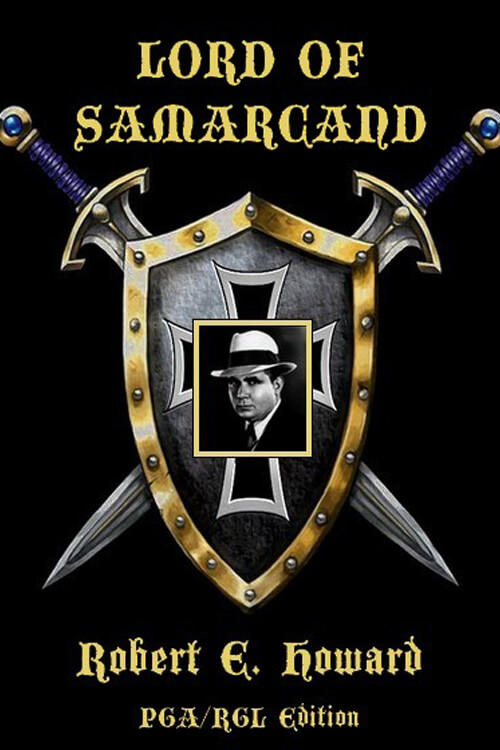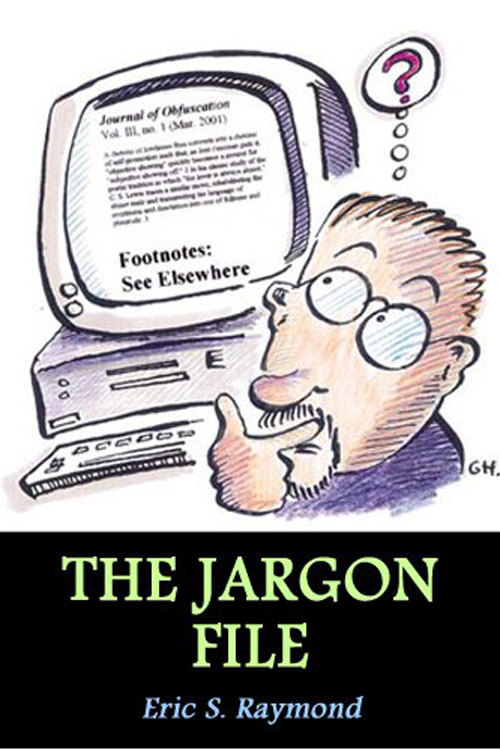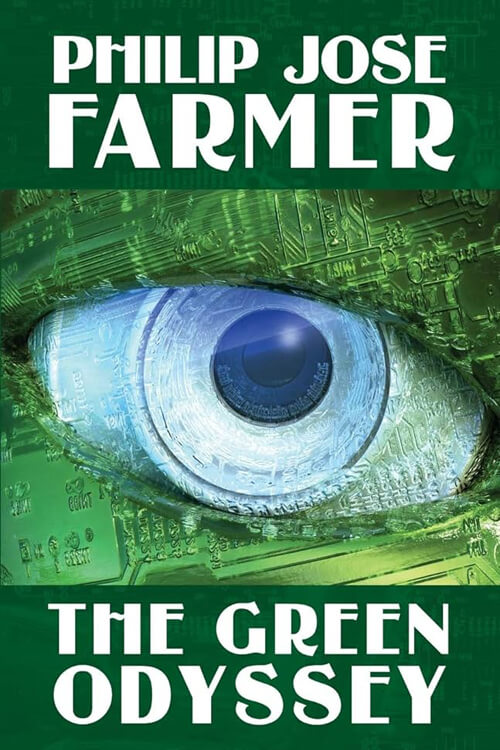
The Jargon File Version 4.2.2
The Jargon File (hereafter referred to as jargon-1′ or the File’) was begun by Raphael Finkel at Stanford in 1975. From this time until the plug was finally pulled on the SAIL computer in 1991, the File was named AIWORD.RF[UP, DOC] there. Some terms in it date back considerably earlier (frob and some sense of moby, for instance, go back to the Tech Model Railroad Club at MIT and are believed to date back to the early 1960s). The revisions of jargon-1 were unnumbered and may be collectively considered `Version 1′. In 1976, Mark Crispin, having seen an announcement about the File on the SAIL computer, FTPed a copy of the File to MIT. He noticed it was hardly restricted to `AI words’ and stored the file on his directory as AI: MRC; SAIL JARGON. The file was quickly renamed JARGON > (the `>’ caused versioning under ITS) as Mark Crispin and Guy L made a flurry of enhancements.
Steele Jr. Unfortunately, amidst all this activity, nobody thought of correcting the term jargon’ toslang’ until the compendium had already become widely known as the Jargon File. Raphael Finkel dropped out of active participation shortly thereafter. Don Woods became the SAIL contact for the File (which was subsequently kept in duplicate at SAIL and MIT, with periodic resynchronizations).
The File expanded by fits and starts until about 1983; Richard Stallman was prominent among the contributors, adding many MIT and ITS-related coinages. In the Spring of 1981, a hacker named Charles Spurgeon got a large chunk of the File published in Stewart Brand’s “CoEvolution Quarterly” with illustrations by Phil Wadler and Guy Steele (including a couple of the Crunchly cartoons). This appears to have been the File’s first paper publication.
Read or download Book
Eric S. Raymond
Eric Steven Raymond (born December 4, 1957), often referred to as ESR, is an American software developer, open-source software advocate, and author of the 1997 essay and 1999 book The Cathedral and the Bazaar.
Biography.
He wrote a guidebook for the Roguelike game NetHack and edited and updated the Jargon File, which was published as The New Hacker’s Dictionary in the 1990s.
Early life
Raymond was born in Boston, Massachusetts, in 1957 and lived in Venezuela as a child. His family moved to Pennsylvania in 1971. He developed cerebral palsy at birth; his weakened physical condition motivated him to go into computing.
Career
Raymond began his programming career writing proprietary software between 1980 and 1985. In 1990, noting that the Jargon File had not been maintained since about 1983, he adopted it, but not without criticism; Paul Dourish maintains an archived original version of the Jargon File because, he says, Raymond’s updates “essentially destroyed what held it together.”
In 1996, Raymond took over developing the open-source email software “pop client”, renaming it to Fetchmail. Soon after this experience, in 1997, he wrote the essay “The Cathedral and the Bazaar”, detailing his thoughts on open-source software development and why it should be done as openly as possible (the “bazaar” approach). The essay was based in part on his experience in developing Fetchmail. He first presented his thesis at the annual Linux Kongress on May 27, 1997. He later expanded the essay into a book, The Cathedral and the Bazaar: Musings on Linux and Open Source by an Accidental Revolutionary, in 1999. The essay has been widely cited. The internal white paper by Frank Hecker that led to the release of the Mozilla (then Netscape) source code in 1998 cited The Cathedral and the Bazaar as “independent validation” of ideas proposed by Eric Hahn and Jamie Zawinski. Hahn would later describe the 1999 book as “clearly influential”.
From the late 1990s onward, due in part to the popularity of his essay, Raymond became a prominent voice in the open-source movement. He co-founded the Open Source Initiative (OSI) in 1998, taking on the self-appointed role of ambassador of open source to the press, business, and public. He remains active in OSI but stepped down as president of the initiative in February 2005. In early March 2020, he was removed from two Open Source Initiative mailing lists due to posts that violated the OSI’s Code of Conduct.
In 1998, Raymond received and published a Microsoft document expressing worry about the quality of rival open-source software. He named this document, together with others subsequently leaked, “The Halloween Documents”.
From 2000 to 2002, he created Configuration Menu Language 2 (CML2), a source code configuration system; while originally intended for the Linux operating system, it was rejected by kernel developers. (Raymond attributed this rejection to “kernel list politics”, but Linus Torvalds said in a 2007 mailing list post that, as a matter of policy, the development team preferred more incremental changes.) Raymond’s 2003 book The Art of Unix Programming discusses user tools for programming and other tasks.
Some versions of NetHack still include Raymond’s guide. He has also contributed code and content to the free software video game The Battle for Wesnoth.
Raymond is the leading developer of NTPsec, a “secure, hardened replacement” for the Unix utility NTP.






